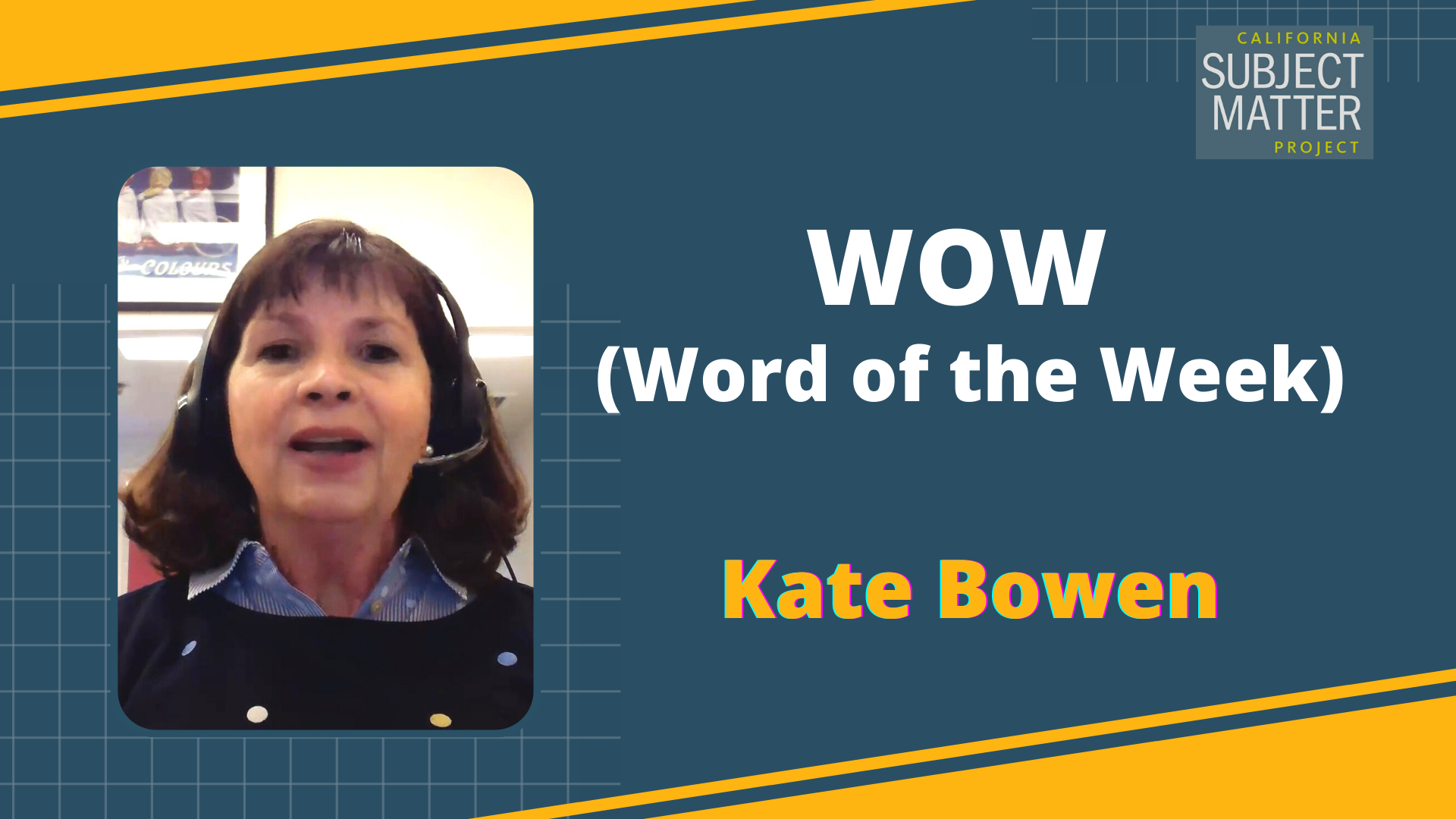Watch the Video
Presenter
Jamie Lanham is an Instructional Coach at San Diego Global Vision Academy in San Diego, California.
Transcript
Hi, I’m Jamie Lanham and I’m an Instructional Coach at San Diego Global Vision Academy. The strategy I’m going to share with you is called “Power Writing,” which is a writing fluency activity. Power Writing is a quick and easy lesson that requires no prior preparation, and it will engage students in a meaningful writing activity. This activity is best for kindergarten through third grade.
To begin, you first have to choose a topic — something very low stakes, but high interest. For example, favorite things, movies, some pop culture, something that students can engage in but not need much academic language to engage in.
Next, you brainstorm ideas and create a list of words and phrases that are important to the topic. I prefer to do this under the document camera, but you could also do it on a whiteboard or on a chart.
After you ask students to brainstorm with you, you then have them decide what are you going to write about, and then have them turn and talk to a partner. This oral rehearsal is really important for our multilingual learners, but it also benefits all students.
After students turn and talk about what they’re going to write, they get ready to write. You can send them back to their desks or their tables, have them take out their writing notebook or a sheet of paper and their writing utensil.
At this point, you want to get students pumped up to do this writing. And so what we do is we recite this mantra. So I always tell students, raise your pencils in the air and repeat after me:
“I am a writer. I am a powerful writer. I will write as much as I can, as well as I can, as fast as I can until the time is through.”
This helps students understand that it’s not going to be graded. They don’t have to worry about their spelling. Their only goal is to generate as much writing as possible.
At this point, you can set a timer. I prefer to do something between five and seven minutes, anything less than five minutes it’s difficult for some students to get started, and after seven minutes, a lot of students lose interest. You’ll find your sweet spot.
As students are writing, you can walk around support and encourage students. Make sure they keep writing. Remind them where their words are on the word bank. Remind them not to worry about spelling, just generate as much writing as possible. After the timer goes off, students can then do an activity called “Magic Headphones.”
Magic Headphones is great because students can auditorily process what they’ve written. To do this, you teach students to plug their ears and vocalize their writing — vocalize as they’re reading. This helps them process what they’ve written and also authentically edit and make changes to their work.
After Magic Headphones, students then do a word count. Have them count their words, remind them not to count letters, just the words. They write that number at the bottom of their page and circle it. This helps challenge students to write more the next time they do this activity, and it’s important to remind them that it’s a competition within themselves, not their peers.
The last step would be sharing. As students are writing, I like to walk around and think, “who would I want to share today?” Maybe you found a student who used dialogue in their writing and you’ve been studying dialogue, maybe you have a student who used some really great word choice and you’ve been talking about word choice. Pick two to three students to share their writing at the end of the activity. I like to have all students clean up so that they’re attentive to the reader. And then under the document camera or in front of the classroom, those students can come up and share their writing.
After they have shared with their class, they can then ask a peer, “do you have any questions or comments?” and peers are then prompted to give writerly feedback. Writerly feedback is something like, “I really like how you use that description,” as opposed to, “I like your picture,” because, remember, we didn’t do any pictures. After that, you can just applaud students for their efforts and look forward to it next time they can clean on up.
In conclusion, Power Writing is a quick and easy lesson that requires no prior preparation and will engage students in a meaningful writing activity.
Accompanying Materials & Resources
- Quick Guide: Power Writing (PDF – 1 Page)
- Power Writing – Slides (Google Slides)
- Power Writing – Slides (PowerPoint)
- Power Writing – One-Pager (Google Docs)
- Power Writing – One-Pager (PDF)



